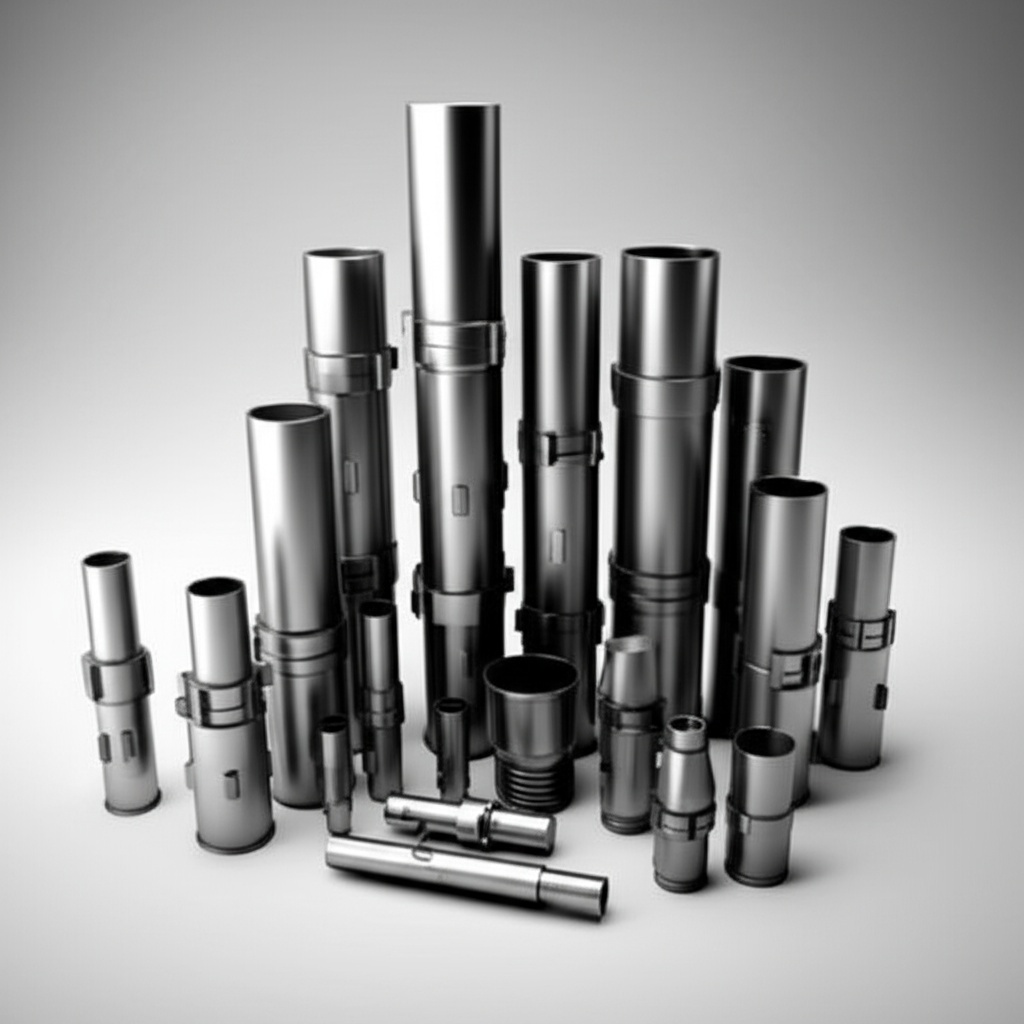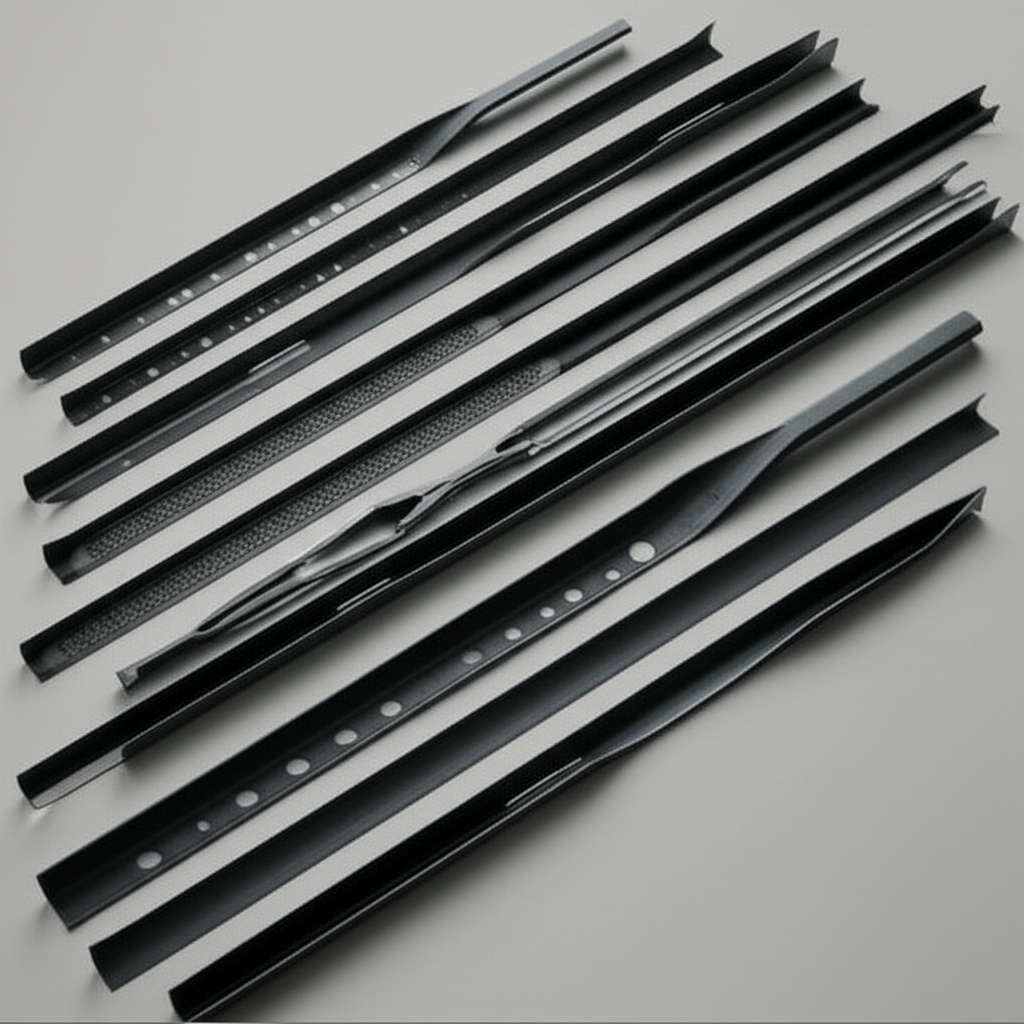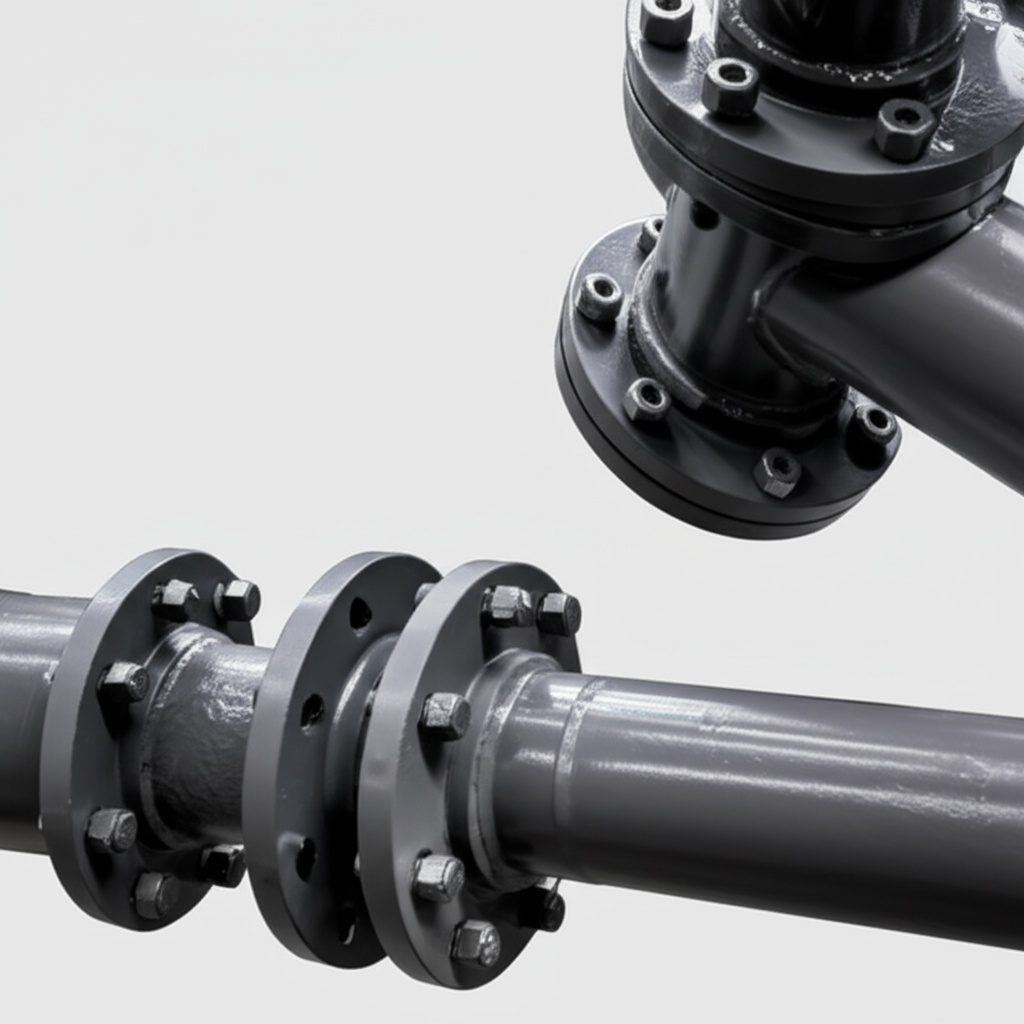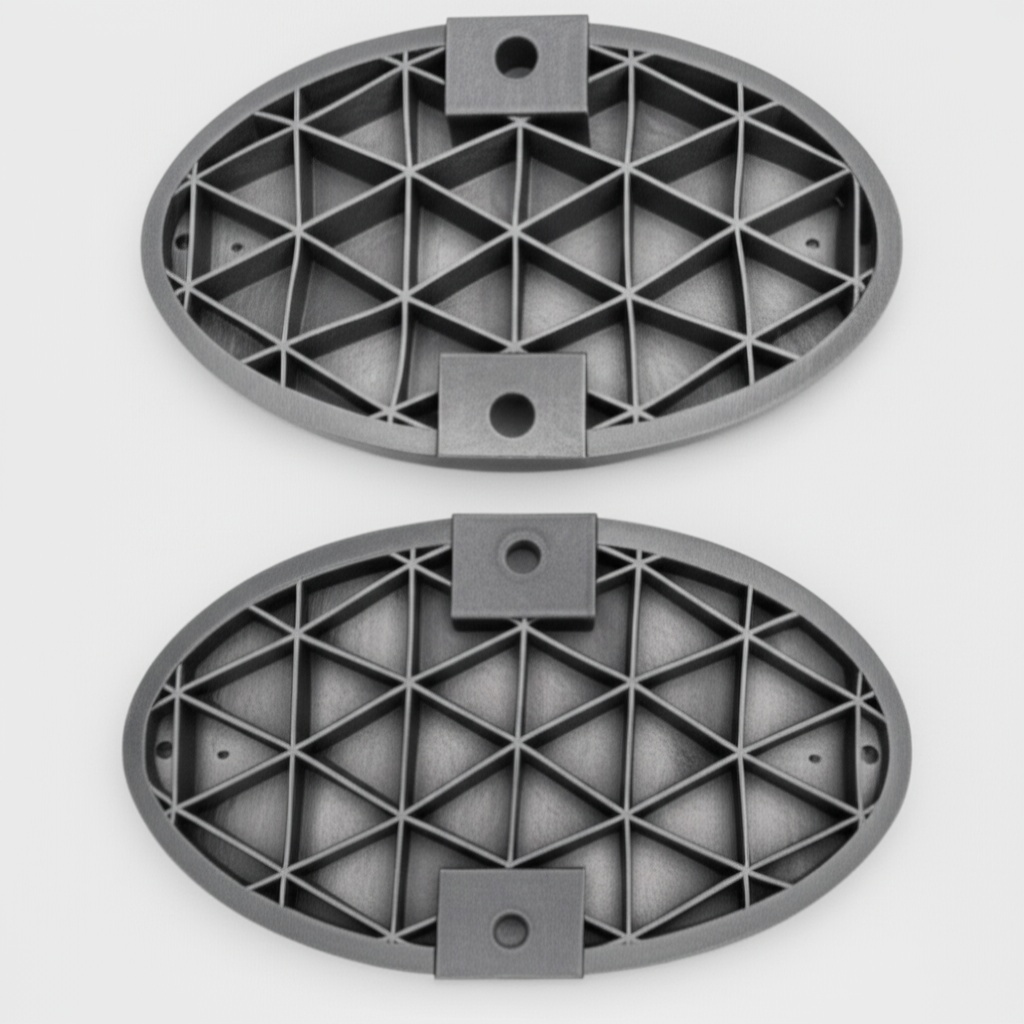Flawless Finishes with SiC Polishing Machines

Share
Flawless Finishes with SiC Polishing Machines
Introduction: The Quest for Perfection in SiC Surface Finishing
In the realm of advanced materials, silicon carbide (SiC) stands out for its exceptional hardness, thermal conductivity, and chemical inertness. These properties make it indispensable across a multitude of high-performance industrial applications, from semiconductor wafers to robust components in aerospace and automotive sectors. However, harnessing the full potential of SiC components often hinges on achieving an impeccably smooth and precise surface finish. This is where silicon carbide polishing machines become critical. These sophisticated pieces of equipment are engineered to deliver flawless, ultra-smooth surfaces on SiC materials, meeting the stringent demands of modern industries. For technical buyers, procurement managers, and engineers, understanding the capabilities and nuances of SiC polishing machines is paramount to ensuring product quality, performance, and reliability. As industries push the boundaries of innovation, the demand for perfectly polished SiC components continues to grow, making these machines a cornerstone of advanced manufacturing.
The precision offered by advanced SiC polishing machines is not merely an aesthetic enhancement; it directly impacts the functional characteristics of the component. In semiconductors, for instance, the surface quality of an SiC wafer can significantly influence device performance and yield. Similarly, in applications involving high-friction or high-wear, a meticulously polished surface can extend the lifespan and improve the efficiency of SiC parts. This blog post will delve into the world of SiC polishing machines, exploring their operational principles, diverse applications, and the critical factors to consider when integrating them into your manufacturing processes.
Why Flawless SiC Surfaces are Non-Negotiable in High-Tech Industries
The surface characteristics of silicon carbide components play a pivotal role in their functional efficacy, particularly in demanding high-tech sectors. A flawless, mirror-like finish is often not just a desirable trait but a fundamental requirement. In the semiconductor industry, the planarity and smoothness of SiC substrates are crucial for epitaxial growth and subsequent device fabrication. Any surface imperfections, such as scratches, subsurface damage, or waviness, can lead to defects in the epitaxial layers, ultimately impacting device yield and reliability. For power electronics, where SiC is favored for high-voltage and high-temperature applications, a superior surface finish minimizes electrical field concentrations and enhances breakdown voltage, contributing to more robust and efficient devices.
In the aerospace and defense sectors, SiC components like mirrors for optical systems or parts for high-speed vehicles demand exceptional surface integrity. For optical applications, surface roughness must be minimized to angstrom levels to prevent light scattering and ensure optimal performance. For mechanical components subjected to extreme conditions, a polished surface reduces friction, wear, and the potential for crack initiation, thereby enhancing durability and operational lifespan. Similarly, in medical device manufacturing, SiC’s biocompatibility combined with a highly polished surface makes it suitable for implants and surgical tools where surface interactions are critical. The automotive industry, particularly with the rise of electric vehicles (EVs) and advanced driver-assistance systems (ADAS), also relies on SiC power modules where surface quality is key for thermal management and electrical performance.
- Semiconductors: Essential for wafer planarity, reducing defects in epitaxial layers, and improving device yield.
- Power Electronics: Minimizes electrical field concentrations, enhances breakdown voltage, and improves thermal dissipation.
- Aerospace & Defense: Critical for optical mirrors (low scatter) and wear-resistant components (reduced friction).
- LED Manufacturing: Improves light extraction efficiency and device longevity.
- Industrial Machinery: Enhances durability of seals, bearings, and nozzles operating in harsh environments.
- Chemical Processing: Reduces residue buildup and improves corrosion resistance on critical components.
Understanding SiC Polishing Machines: Key Components and Mechanisms
Silicon carbide polishing machines are precision instruments designed to achieve ultra-fine surface finishes on one of the hardest known ceramic materials. Their operation relies on a combination of mechanical action and chemical processes, often referred to as Chemical Mechanical Polishing (CMP) when applied to wafer-level processing, or precision lapping and polishing for other component geometries. Understanding the core components and mechanisms is crucial for selecting the right equipment and optimizing the polishing process.
Key Components Typically Include:
- Polishing Platen/Wheel: This is the rotating surface onto which the polishing pad is mounted. Its size, material (e.g., cast iron, aluminum, granite), and flatness are critical for achieving uniform polishing. Platens can vary significantly in diameter, accommodating different workpiece sizes and throughput requirements.
- Polishing Pad: The pad is the interface material that holds the abrasive slurry and directly interacts with the SiC surface. Pads come in various materials (e.g., polyurethane, felt, synthetic fabrics) and hardness levels, chosen based on the SiC type, desired removal rate, and target finish.
- Slurry Delivery System: This system precisely dispenses the polishing slurry onto the platen. The slurry typically consists of fine abrasive particles (e.g., diamond, colloidal silica, alumina) suspended in a liquid carrier, which may also contain chemical etchants to assist in material removal. Consistent flow rate and distribution are vital.
- Workpiece Carrier/Head: This component holds the SiC workpiece(s) and applies controlled pressure against the polishing pad. Advanced machines feature multi-head carriers for increased throughput and employ sophisticated pressure control systems to ensure uniformity across the workpiece surface and from piece to piece. The head may also impart its own rotational or oscillatory motion.
- Conditioning System: Polishing pads wear down and can become glazed with removed material and spent abrasive. A conditioning system, often using a diamond disc, is used to refresh the pad surface, maintaining its cutting ability and consistency throughout the polishing process.
- Control System: Modern SiC polishing machines are equipped with advanced PLC or computer-based control systems. These allow operators to precisely manage parameters such as platen speed, carrier pressure, slurry flow rate, and polishing time. Many systems offer recipe storage for different applications.
The primary mechanism involves pressing the SiC workpiece against the rotating polishing pad, which is wetted with the abrasive slurry. Material removal occurs through a combination of mechanical abrasion by the slurry particles and, in some cases (like CMP), chemical reactions that soften the SiC surface, making it easier to remove mechanically. The goal is to progressively reduce surface roughness and remove any subsurface damage from prior machining steps like grinding or lapping, ultimately achieving a mirror-like, defect-free surface.
Types of SiC Polishing Machines and Their Optimized Applications
The diversity in silicon carbide applications necessitates a range of polishing machines, each tailored for specific requirements in terms of workpiece geometry, volume, and final surface specifications. Broadly, these can be categorized based on their operational principles and the scale of components they are designed to handle.
1. Chemical Mechanical Polishing (CMP) Machines:
Primarily used in the semiconductor industry for global planarization of SiC wafers. CMP machines combine chemical etching with mechanical abrasion using fine abrasives in a slurry.
- Optimized Applications: SiC substrate manufacturing for power devices, RF devices, and LEDs. Achieving angstrom-level surface roughness (Ra) and excellent Total Thickness Variation (TTV).
- Key Features: High precision, automated wafer handling, sophisticated endpoint detection, and slurry chemistry control.
2. Single-Side Lapping and Polishing Machines:
These machines are versatile and used for polishing one face of an SiC component. The workpiece is held in a carrier and pressed against a single rotating platen covered with a polishing pad.
- Optimized Applications: Mechanical seals, bearings, wear plates, optical components (mirrors, windows), and specialized electronic substrates where only one side requires a critical finish.
- Key Features: Suitable for various shapes and sizes, good for achieving high flatness and parallelism (when combined with prior lapping), adaptable for different abrasives and pads.
3. Double-Side Lapping and Polishing Machines:
These machines process both sides of a workpiece simultaneously, ensuring exceptional parallelism and flatness. Workpieces are held in carriers that rotate between two counter-rotating platens.
- Optimized Applications: Precision optics, sensor components, thin SiC substrates, and any application requiring tight control over thickness, parallelism, and flatness on both surfaces.
- Key Features: High throughput for suitable components, superior parallelism and flatness, typically used for batch processing.
4. Specialized and Custom Polishing Systems:
For unique geometries or extremely demanding applications, specialized or custom-designed polishing machines are often necessary. This can include robotic polishing systems for complex 3D shapes or machines integrated with advanced metrology.
- Optimized Applications: Aerospace components with complex curves, custom optics, internal surfaces of SiC tubes or chambers, R&D purposes.
- Key Features: High degree of customization, often involves automation, tailored for specific component geometries and surface requirements.
The choice of machine depends heavily on the application requirements. For instance, a semiconductor fab will invest in high-throughput CMP machines, while a company producing custom SiC wear parts might opt for more versatile single-side polishing machines. Procurement managers and engineers must carefully evaluate production volume, component complexity, required surface finish (Ra, Rz, Rmax), flatness, parallelism, and budget when selecting the appropriate SiC polishing technology.
The Science of SiC Polishing: Abrasives, Slurries, and Techniques
Achieving a flawless finish on silicon carbide, a material renowned for its extreme hardness (Mohs hardness of 9.0-9.5, second only to diamond), is a complex scientific endeavor. The process relies on carefully selected abrasives, precisely formulated slurries, and optimized polishing techniques to progressively remove material at a microscopic level, minimizing subsurface damage and achieving the desired surface topography.
Abrasives – The Cutting Edge:
Given SiC’s hardness, the abrasive material used for polishing must be harder or possess specific chemo-mechanical properties.
- Diamond: The hardest known material, diamond is the most common abrasive for SiC polishing, especially for initial and intermediate steps. It’s available in various particle sizes (from tens of microns down to sub-micron) and types (monocrystalline, polycrystalline). Polycrystalline diamond often provides a better surface finish due to its multiple cutting edges.
- Colloidal Silica: Used extensively in the final polishing stages, especially in Chemical Mechanical Polishing (CMP). Colloidal silica slurries typically have a high pH, promoting a chemical reaction with the SiC surface that forms a softer silica-like layer. This layer is then easily removed by the gentle mechanical action of the silica nanoparticles and the polishing pad. This results in exceptionally smooth, damage-free surfaces.
- Alumina (Aluminum Oxide): While less hard than SiC, specialized alumina slurries can be used in certain lapping or pre-polishing steps, often for less critical applications or as part of a multi-stage process.
- Boron Carbide (B4C): Harder than SiC, boron carbide can also be used as an abrasive, though diamond is more prevalent due to cost and process control factors.
Slurries – The Abrasive Delivery System:
The polishing slurry is more than just abrasive particles suspended in a liquid. Its formulation is critical:
- Carrier Liquid: Usually deionized water, but can also be oil-based or involve specific chemical etchants. The carrier lubricates, cools, and transports removed material and spent abrasives away from the polishing zone.
- pH and Chemical Additives: In CMP, the pH of the slurry (e.g., alkaline for colloidal silica) is crucial for the chemical reactions that facilitate material removal. Dispersants are added to keep abrasive particles from agglomerating, ensuring uniform distribution. Other additives can modify viscosity or enhance surface interaction.
- Abrasive Concentration: The concentration of abrasive particles affects the material removal rate and surface finish. Higher concentrations can increase removal rates but may lead to a rougher finish if not carefully controlled.
Polishing Techniques and Parameters:
The mechanical aspects of the polishing process are equally important:
- Pressure (Downforce): The force applied to the SiC workpiece against the polishing pad. Higher pressure generally increases material removal rate but can also induce more subsurface damage if not optimized.
- Relative Velocity: The speed difference between the polishing pad and the workpiece. Higher speeds can increase removal rates but also generate more heat.
- Pad Characteristics: Pad hardness, porosity, and groove patterns influence slurry distribution, material removal, and the ability to conform to the workpiece surface. Softer pads are typically used for final polishing to achieve lower roughness.
- Multi-Step Polishing: Achieving an optimal finish on SiC almost always involves a multi-step process. This starts with coarser abrasives to remove bulk material and subsurface damage from previous operations (like grinding), followed by progressively finer abrasives to reduce roughness and achieve the final desired finish and planarity. Each step is designed to remove the damage layer created by the previous one.
Understanding these scientific principles allows manufacturers to tailor their SiC polishing processes for specific outcomes, balancing material removal rate with surface quality and minimizing induced damage. This is crucial for industries like semiconductors, optics, and power electronics where component performance is directly tied to surface integrity.
Advantages of Advanced SiC Polishing Machines for B2B Clients
Investing in advanced silicon carbide polishing machines offers significant competitive advantages for B2B clients across various industries. These machines are not just about achieving a shiny surface; they are about enhancing product performance, improving manufacturing efficiency, and enabling innovation. For procurement managers, OEMs, and technical buyers, recognizing these benefits is key to making informed investment decisions.
Key Advantages Include:
- Superior Product Quality and Performance:
Advanced polishing machines deliver exceptional surface finishes (low Ra, minimal subsurface damage) and dimensional accuracy (flatness, parallelism). This translates directly to:- Semiconductors & Power Electronics: Higher device yields, improved electrical characteristics (e.g., breakdown voltage, lower leakage current), and better thermal management.
- Optics & Aerospace: Enhanced optical performance (low scatter, high reflectivity), increased durability of components under stress.
- Industrial Components: Reduced friction and wear in seals and bearings, leading to longer operational life and lower maintenance costs.
- Increased Manufacturing Efficiency and Throughput:
Modern SiC polishing machines often feature automation, multi-head configurations, and optimized process controls. This leads to:- Faster polishing cycles and higher throughput.
- Reduced manual intervention, freeing up skilled labor for other tasks.
- Consistent, repeatable results, minimizing rework and scrap rates.
- Cost Reduction in the Long Term:
While the initial investment can be significant, advanced polishing machines contribute to overall cost savings through:- Improved yields and reduced material waste.
- Lower inspection and rework costs due to higher process consistency.
- Extended lifespan of SiC components, reducing replacement frequency for end-users.
- Potential for reduced slurry consumption through optimized delivery and recycling systems.
- Enhanced Design Freedom and Innovation:
The ability to achieve ultra-precise finishes on a challenging material like SiC opens doors for developing new and improved products. Engineers can design components with more stringent surface specifications, leading to breakthroughs in various fields. - Process Control and Data Logging:
Many advanced machines come equipped with sophisticated sensors and software for real-time process monitoring and data logging. This is invaluable for:- Quality assurance and traceability.
- Process optimization and troubleshooting.
- Meeting stringent industry standards and customer requirements.
- Capability to Process Advanced SiC Grades:
As new grades of SiC (e.g., N-type, semi-insulating, various polytypes like 4H-SiC, 6H-SiC) are developed, advanced polishing machines are better equipped to handle their specific characteristics and achieve optimal finishes.
For B2B clients, selecting the right SiC polishing machine is a strategic decision that impacts not just the finishing department but the overall competitiveness and quality proposition of their products. Partnering with a knowledgeable supplier who can offer insights into the latest machine capabilities and process optimization is crucial.
Key Considerations When Selecting an SiC Polishing Machine
Choosing the right silicon carbide polishing machine is a critical decision for businesses aiming for top-quality SiC components. Procurement managers, engineers, and technical buyers must evaluate several factors to ensure the selected equipment aligns with their specific production needs, quality standards, and budget constraints. A thorough assessment will lead to a more effective and profitable investment.
1. Application and Workpiece Specifications:
- Material Type: Different SiC grades (e.g., sintered, reaction-bonded, CVD SiC, single crystal) may have slightly different polishing characteristics.
- Component Geometry and Size: Are you polishing small, flat wafers, large plates, or complex 3D shapes? This will dictate the machine type (e.g., CMP, single-side, double-side, robotic).
- Required Surface Finish: Specify target values for roughness (Ra, Rq, Rz), waviness, and defect levels.
- Dimensional Tolerances: What are the requirements for flatness, parallelism, and thickness variation (TTV)?
2. Throughput and Production Volume:
- Batch Size vs. Continuous Flow: Consider your production workflow.
- Cycle Time: How quickly does a component need to be polished?
- Automation Level: Manual, semi-automated, or fully automated systems. Higher automation increases throughput and consistency but also cost.
3. Machine Capability and Features:
- Platen Size and Speed Range: Must accommodate your workpiece and offer sufficient speed control.
- Pressure Control System: Precision and uniformity of applied pressure are critical.
- Slurry Delivery System: Accuracy, consistency, and the ability to handle different slurry types. Options for slurry recycling or cooling.
- Pad Conditioning System: Essential for maintaining consistent polishing performance.
- Process Control and Monitoring: Availability of real-time parameter adjustment, recipe management, endpoint detection, and data logging.
4. Consumables and Operating Costs:
- Polishing Pads: Lifespan, cost, and availability.
- Abrasive Slurries: Consumption rate, cost, and disposal requirements. Consider the cost-effectiveness of different abrasive types (e.g., diamond vs. colloidal silica).
- Conditioning Discs: Lifespan and replacement cost.
- Utilities: Power consumption, compressed air, water (if applicable).
5. Supplier Reputation and Support:
- Technical Expertise: Does the supplier understand SiC polishing intricacies and offer application support?
- After-Sales Service: Availability of maintenance, spare parts, and technical assistance.
- Training: Provision of operator and maintenance training.
- Installation and Commissioning: Ensure the supplier provides robust support during setup.
6. Footprint and Facility Requirements:
- Machine Dimensions: Ensure it fits within your available floor space.
- Environmental Controls: Some high-precision polishing may require cleanroom or temperature-controlled environments.
- Waste Disposal: Plan for the handling and disposal of used slurries and other waste materials in compliance with environmental regulations.
7. Budget and Return on Investment (ROI):
- Initial Purchase Cost: Compare quotes from different suppliers.
- Total Cost of Ownership (TCO): Factor in consumables, maintenance, labor, and utilities over the machine’s lifespan.
- ROI Analysis: Evaluate how the machine will contribute to improved quality, increased efficiency, and reduced costs.
A detailed checklist addressing these considerations will guide technical teams toward selecting an SiC polishing machine that not only meets current needs but also supports future growth and innovation.
Integrating SiC Polishing into Your Manufacturing Workflow
Successfully integrating silicon carbide polishing into a manufacturing workflow requires more than just purchasing a machine; it demands careful planning, process optimization, and consideration of upstream and downstream operations. For Original Equipment Manufacturers (OEMs) and manufacturing facilities, a holistic approach ensures that the polishing step adds maximum value, enhances product quality, and maintains overall production efficiency.
1. Upstream Process Considerations:
The quality of the incoming SiC component significantly impacts the polishing process.
- Material Quality: Start with high-quality SiC material with minimal inherent defects.
- Machining/Grinding: Prior machining steps (sawing, grinding, lapping) must be well-controlled to minimize subsurface damage and achieve good initial geometry. The polishing step is designed to remove this damage, but excessive damage will require longer polishing times or more aggressive initial steps.
- Cleaning: Components must be thoroughly cleaned before polishing to remove any debris, oils, or contaminants from previous operations that could interfere with the polishing process or damage the polishing pad.
2. Polishing Process Setup and Optimization:
- Dedicated Space: Allocate a suitable area for the polishing machine, considering environmental factors like cleanliness, temperature, and vibration control, especially for high-precision applications.
- Parameter Development: Invest time in developing optimal polishing recipes for each specific component type. This involves experimenting with parameters like pressure, speed, slurry type and concentration, and polishing time. Maintain detailed records.
- Consumable Management: Implement a system for managing polishing pads, slurries, and conditioning discs. Track usage, lifespan, and ensure timely replacement to maintain consistent results.
- Operator Training: Ensure operators are thoroughly trained on machine operation, safety procedures, process parameter adjustments, basic maintenance, and quality checks.
3. In-Process Quality Control:
- Metrology: Implement appropriate metrology tools to measure surface finish (e.g., profilometers, atomic force microscopes – AFM), flatness (interferometers), and other critical parameters. This allows for real-time feedback and process adjustments.
- Sampling Plans: Define sampling plans for quality checks based on production volume and criticality of the components.
- Visual Inspection: Train operators to perform visual inspections for obvious defects like scratches or uneven polishing.
4. Downstream Process Considerations:
- Post-Polishing Cleaning: Thorough cleaning is essential after polishing to remove all slurry residues and particulate contamination. This is critical for subsequent processes like coating, bonding, or assembly, especially in semiconductor and optical applications. Specialized cleaning stations or ultrasonic baths may be required.
- Handling and Packaging: Implement careful handling procedures to prevent damage to the highly polished surfaces. Use appropriate packaging materials that do not scratch or contaminate the components.
5. Workflow and Material Handling:
- Process Flow Design: Design an efficient process flow that minimizes material movement and waiting times.
- Automation Opportunities: For high-volume production, consider automating material handling between the polishing machine and other process steps (e.g., cleaning, metrology).
6. Maintenance and Process Stability:
- Preventive Maintenance Schedule: Adhere to the machine manufacturer’s recommended maintenance schedule to ensure long-term reliability and consistent performance.
- Process Monitoring: Continuously monitor key process indicators (KPIs) to detect any drifts or deviations from the optimal process window.
By addressing these integration aspects, manufacturers can transform their SiC polishing operation from a standalone step into a seamlessly integrated and value-adding part of their overall production system. This strategic approach is vital for meeting the increasing demands for high-quality SiC components in advanced industries.
The Weifang Hub & Sicarb Tech: Your Partner in SiC Excellence
When sourcing custom silicon carbide components or seeking expertise in SiC processing, understanding the global landscape of manufacturing capabilities is crucial. A significant portion of this landscape is centered in Weifang City, China, which has emerged as the hub of China’s silicon carbide customizable parts factories. This region is home to over 40 silicon carbide production enterprises of various sizes, collectively accounting for more than 80% of China’s total SiC output. This concentration of expertise and production capacity makes Weifang a pivotal location for businesses worldwide seeking high-quality SiC products.
At the forefront of fostering innovation and technological advancement within this dynamic hub is Sicarb Tech. Since 2015, we have been instrumental in introducing and implementing advanced silicon carbide production technology, empowering local enterprises to achieve large-scale production and significant improvements in product processes. As witnesses to the emergence and ongoing development of the Weifang SiC industry, Sicarb Tech has played a key role in its growth.

About the Author: Sicarb Tech
We provide clear and reliable insights into silicon carbide materials, component manufacturing, application technologies, and global market trends. Our content reflects industry expertise, practical experience, and a commitment to helping readers understand the evolving SiC landscape.




